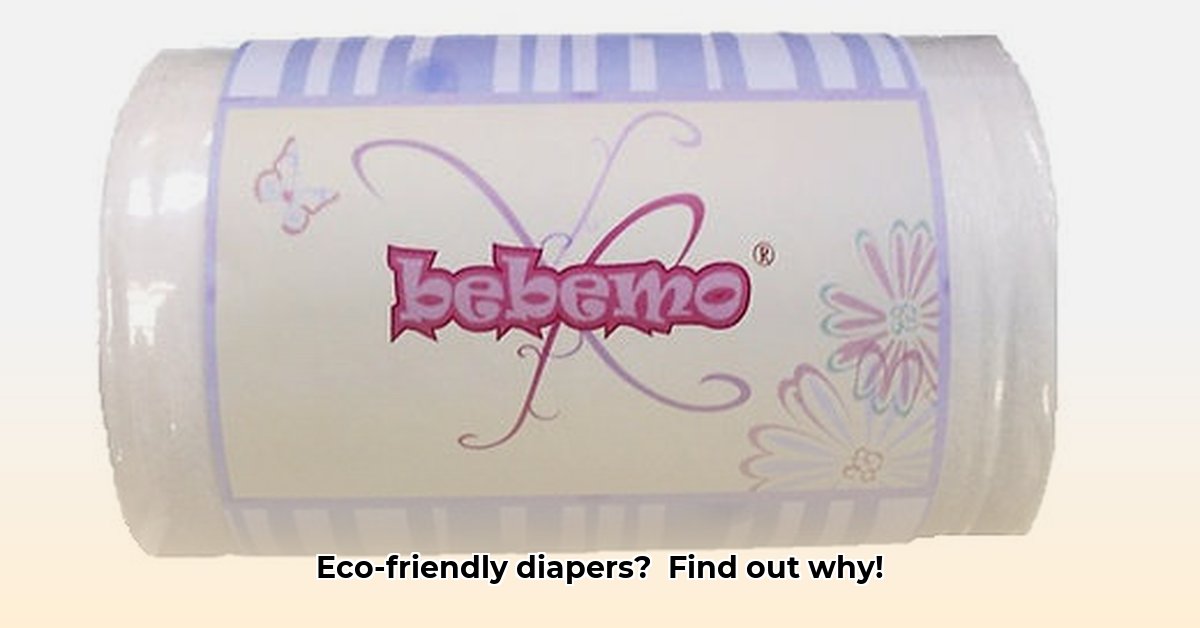
Bebemo: A Hybrid Approach to Reusable Diapers
The decision to choose the right diapers for your baby is a big one, fraught with considerations of cost, convenience, and environmental impact. Bebemo diapers offer a unique hybrid system, aiming to bridge the gap between the eco-consciousness of reusable cloth diapers and the practicality of disposables. But do they deliver on their promise of a sustainable and convenient solution? This analysis delves into Bebemo's claims, exploring the benefits, drawbacks, and the crucial need for independent verification.
Bebemo Diaper System: Features and Benefits
Bebemo's system uses a reusable outer shell paired with disposable inner inserts. This adjustable design accommodates your baby’s growth, making it potentially more economical than constantly buying new-sized diapers. Different absorbency options (single or double inserts) cater to varying needs, from daytime use to overnight protection. This hybrid approach aims to minimize waste while maintaining convenience. Are there truly fewer overall disposable inserts needed compared to other systems? The available data doesn't conclusively answer this.
Sustainability: A Critical Assessment
Bebemo markets its diapers as eco-friendly, citing reusable elements and biodegradable materials. However, a significant gap exists: a lack of independent verification to substantiate these claims. Without third-party testing to confirm the environmental impact of manufacturing, material sourcing, use, and disposal, the claimed sustainability remains unproven. To accurately assess Bebemo's environmental footprint, a comprehensive lifecycle assessment (LCA) comparing it to fully reusable and disposable equivalents is necessary. This study would reveal the total energy consumption in the manufacturing, transportation, and even the washing of reusable parts.
Core Insights:
- Bebemo's hybrid system attempts a balance between reusability and disposability, but its overall environmental impact is unclear.
- Independent verification is absent, hindering consumer trust and objective assessment of Bebemo's sustainability claims.
- A comprehensive lifecycle assessment (LCA) is crucial to analyze the total environmental impact of the entire system.
The Missing Piece: Independent Verification
The absence of independent verification is a major concern. Without third-party confirmation of Bebemo's claims regarding absorbency, leak prevention, and material composition, consumers lack the objective data needed to make informed decisions. This lack of transparency undermines trust and prevents a fair comparison with competing diaper brands. Wouldn't you want independent confirmation before committing to a product with such significant cost and environmental implications?
The Parent's Perspective: Weighing Pros and Cons
From a parental perspective, several elements influence the appeal of Bebemo diapers:
Potential Advantages:
- Adjustable sizing offers cost savings over time.
- Customizable absorbency levels accommodate various situations.
- The disposable inserts add convenience, particularly for outings.
- Potentially reduced landfill waste compared to fully disposable options.
Potential Disadvantages:
- The reusable components require time for washing and drying.
- Long-term durability remains uncertain without independent testing.
- The environmental impact of the disposable inserts needs further scrutiny.
- The high upfront cost may be a deterrent for some families.
Recommendations: A Path Forward
To enhance transparency and bolster consumer trust, Bebemo should take immediate action to:
- Commission independent third-party testing to verify claims regarding absorbency, leak prevention, and material composition.
- Conduct a comprehensive and transparent lifecycle assessment (LCA) to objectively evaluate its environmental footprint.
- Publicly share the results of both the independent testing and the LCA.
Consumers should remain discerning, carefully comparing Bebemo to alternative options, and actively seeking independent reviews and comparisons before making a purchase. Our investigation highlights the urgent need for increased transparency in the sustainable-baby-product market. Independent verification is not merely a desirable feature; it’s a necessity for responsible and ethical business practices.
Comparing Bebemo's Absorbency: A Practical Guide
Determining which reusable diaper offers superior absorbency requires careful consideration. While Bebemo provides a hybrid system, the overall absorbency, compared to fully disposable options, is unclear without independent verification.
Steps for Comparison:
- Analyze Material Composition: Compare the absorbent materials used in Bebemo inserts to those of competitor brands (e.g., hemp, bamboo, cotton, microfiber).
- Review Manufacturer Specs: Look for details on weight and thickness, as these often correlate with absorbency.
- Seek Independent Reviews: Look for third-party testing and unbiased reviews to assess absorbency claims.
- Evaluate User Feedback: Assess user reviews, noting experiences with absorbency and instances of leakage.
- Test Them Yourself: If possible, purchase a small amount of diapers from the different brands to test directly.
The lack of standardized testing makes direct comparison challenging. Independent verification of Bebemo's absorbency claims and those of other brands would significantly improve consumer confidence.